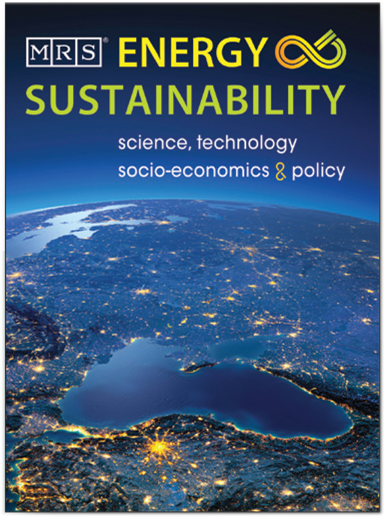Materials and manufacturing renaissance: Additive manufacturing of high-entropy alloys
Jinyeon Kim, Akane Wakai, Atieh Moridi
To achieve fine equiaxed grains in additive manufacturing (AM), alloy design and solidification conditions are optimized in various alloy systems. The authors report solidification maps based on laser process parameters (versus most commonly used solidification velocity and temperature gradient) constructed from the literature for single-phase face-centered cubic, body-centered cubic, and multiphase high-entropy alloys (HEAs) to guide printing of HEAs and provide insight into the design of novel HEAs for AM. doi.org/10.1557/jmr.2020.140

Integration of AlN piezoelectric thin films on ultralow fatigue TiNiCu shape memory alloys
Sabrina M. Curtis, Niklas Wolff, Duygu Dengiz, Hanna Lewitz, Justin Jetter, Lars Bumke, Patrick Hayes, Erdem Yarar, Lars Thormählen, Lorenz Kienle, Dirk Meyners, Eckhard Quandt
Biomagnetic field sensors based on AlN/FeCoSiB magnetoelectric (ME) composites are tuned at the resonant frequency to match the biomagnetic signal of interest. A tunable mechanical resonant frequency is achieved when ME composites are integrated onto shape memory alloy (SMA) thin films. Authors report a process for high-quality c-axis growth of AlN on either amorphous or crystallized TiNiCu SMA thin films on Si substrates. These composites show piezoelectric coefficients as high as d 33,f = 6.4 pm/V. doi.org/10.1557/jmr.2020.106
Van der Waals epitaxy and composition control of layered SnSxSe2−x alloy thin films
Joshua J. Fox, Xiaotian Zhang, Zakaria Y. Al Balushi, Mikhail Chubarov, Azimkhan Kozhakhmetov, Joan M. Redwing
Epitaxial SnSxSe2−x films with tunable bandgap energies (1.0–2.2 eV) are of interest for nanoscale electronics. SnSxSe2−x grown by powder vapor transport growth on c-plane sapphire and epitaxial graphene (EG)/6H–SiC substrates consisted of vertically oriented platelets. By contrast, large-area, planar coalesced SnSxSe2−x films grew on EG with low surface roughness indicative of a van der Waals growth mode with SnSxSe2−x films c-axis oriented with an epitaxial relation of [112¯0] SnSxSe2−x || [101¯0] 6H–SiC. doi.org/10.1557/jmr.2020.19
Think circular—Reducing embodied carbon through materials selection

Fiona Cousins, Tiffany Broyles Yost, Gray Bender
As the operational carbon in the built environment falls through improved design, the embodied carbon released from extraction, manufacturing, and transportation of materials becomes more significant. The authors explain how material choices can affect environmental conditions and human health, and showcase how decision making can be improved through greater transparency and a broader view of materials impact. doi.org/10.1557/mre.2018.3
Climate change and fossil fuel: An examination of risks for the energy industry and producer states
Jim Krane
Compiling and categorizing the climate risk facing the fossil fuel industry, the author finds the risk differs greatly among coal, oil, and natural gas, as well as between the developing and developed world. He identifies heightened risk for the coal industry and reduced risk for oil businesses, due to its lack of substitutes.
doi.org/10.1557/mre.2017.3
The pathway to 100% renewable must include changes in regulation, focus on operations, and promotion of innovations
Rao Konidena, Vivek Bhandari
Industry leaders discuss how the electric industry is transitioning to higher penetrations of renewables. Rather than by doubling down on existing renewable technologies, the authors argue that we can achieve it by cohesively focusing on energy needs and working on regulation (with focus on holistic grid needs), operations (e.g., markets and balancing authority products), and innovation (e.g., newer technologies like hydrogen). doi.org/10.1557/mre.2020.19



